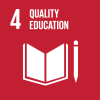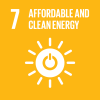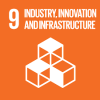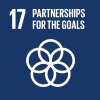Yogyakarta, June 12, 2024. A total of 15 undergraduate students and 3 lecturers from the Physics Department of Universitas Gadjah Mada (UGM) visited the Kartini Reactor, managed by the National Research and Innovation Agency (BRIN) Yogyakarta. This visit was conducted as part of a seminar for the Reactor Physics course and aimed to provide insights into the operation and workings of the Kartini Reactor.
The visit began with a warm welcome from BRIN Yogyakarta representatives, Mr. Argo Satrio and Mr. Umar, in the discussion room. For approximately 30 minutes, the students and lecturers were given an introductory lecture on the history of the Kartini Reactor and an overview of nuclear reactions. This material was delivered by a team of experts from BRIN, formerly known as BATAN Yogyakarta. They explained the evolution and contributions of the Kartini Reactor in nuclear research in Indonesia.
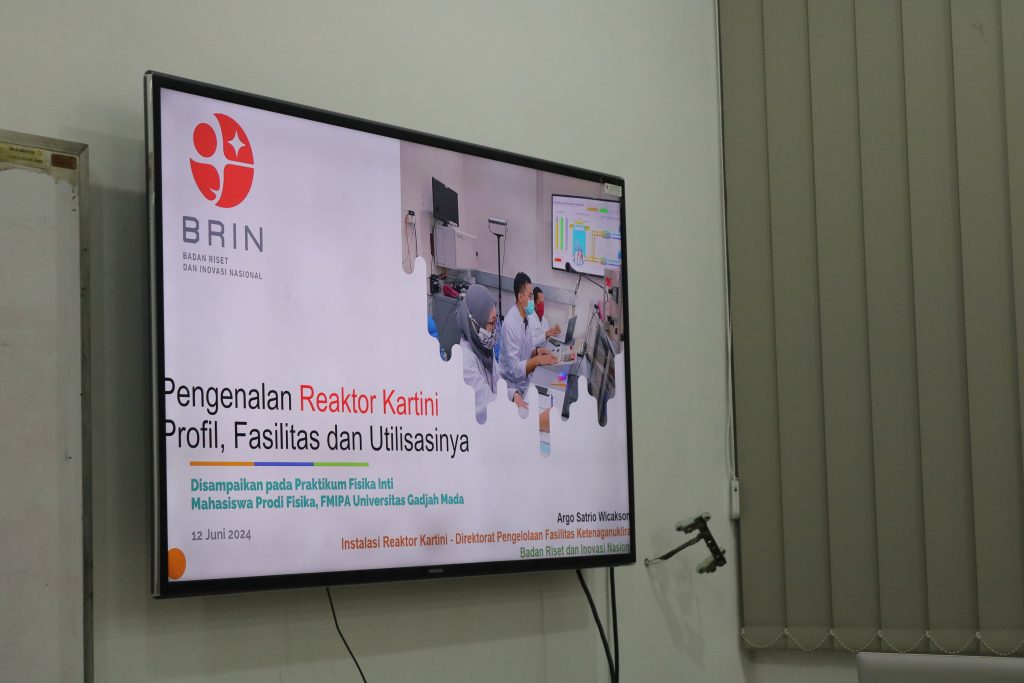
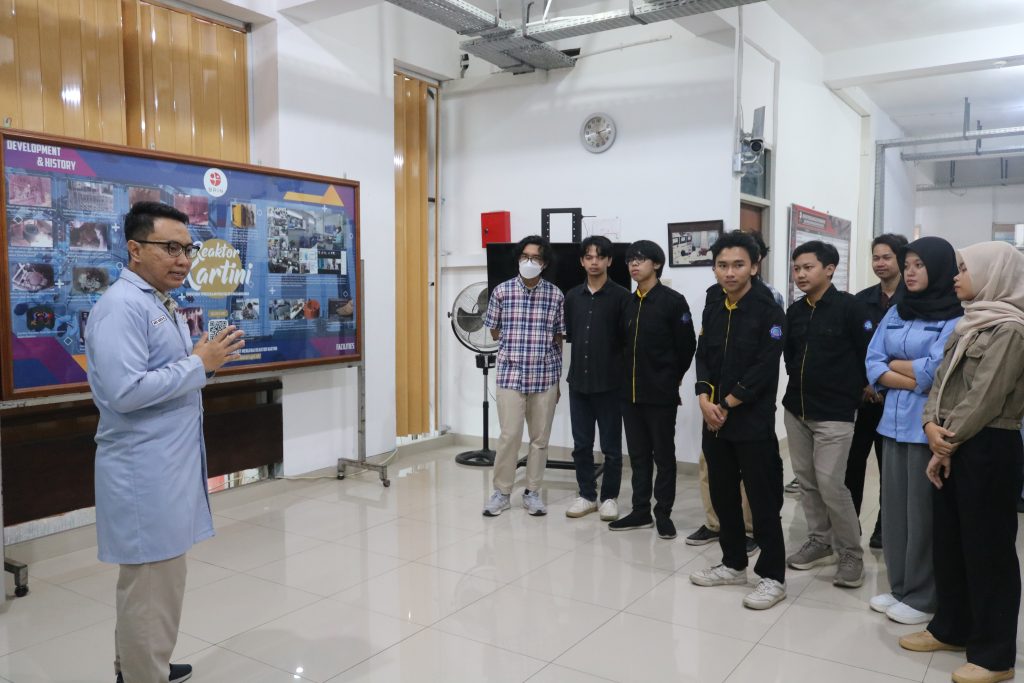
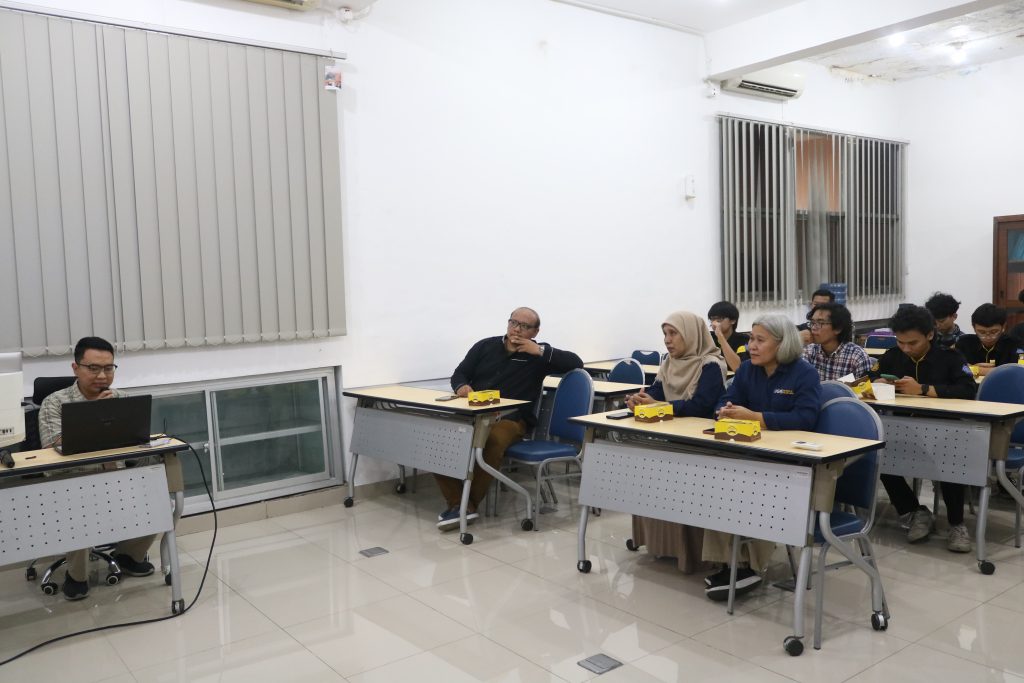
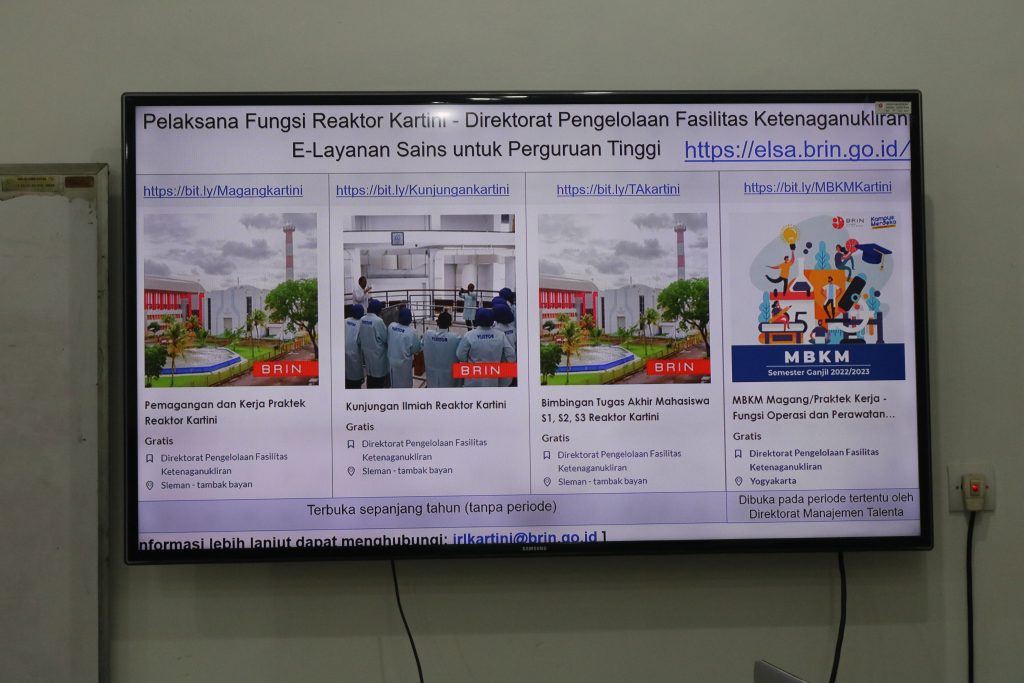
Photos – photos of BRIN Yogyakarta’s welcome speech in the discussion room to UGM physics students and lecturers
During the introductory lecture session, the students received in-depth information about the crucial role of the Kartini Reactor in various research fields. Additionally, they were briefed on the stringent safety procedures in operating a nuclear reactor.
After the discussion and presentation session, the students and lecturers were given the opportunity to see the Kartini Reactor up close. They were taken on a tour to observe the reactor’s operation and working mechanisms firsthand. The participants were enthusiastic as they watched and listened to explanations of the processes occurring within the reactor, including how nuclear fuel is used and how the cooling system works to maintain reactor stability.
Accompanying lecturer, Prof. Sholihun, S.Si., M.Sc., Ph.D.Sc., stated that the visit was highly beneficial for the students as it provided real-world experience that could not be obtained through classroom theory alone. “Through this visit, students can gain a deeper understanding of how the theories they learn in class are applied in real-world situations,” said Prof. Sholihun.
One of the students, Clarissa Alyn, also expressed her gratitude for the opportunity. “The visit to the Kartini Reactor has given us a broader understanding of reactor physics and increased our interest in delving further into this field,” said Alyn.
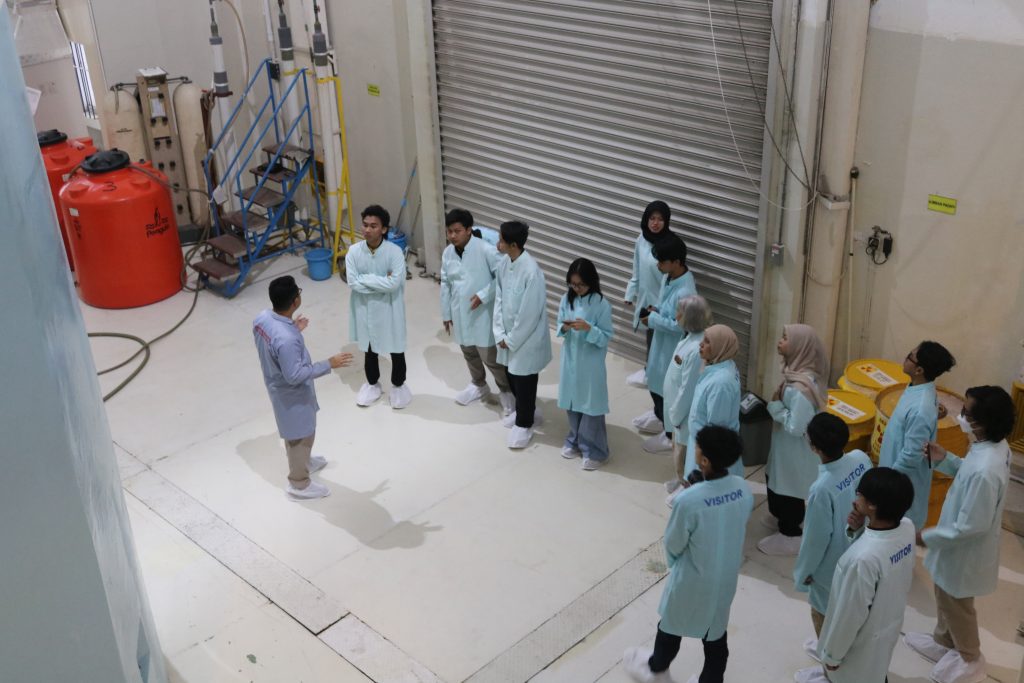
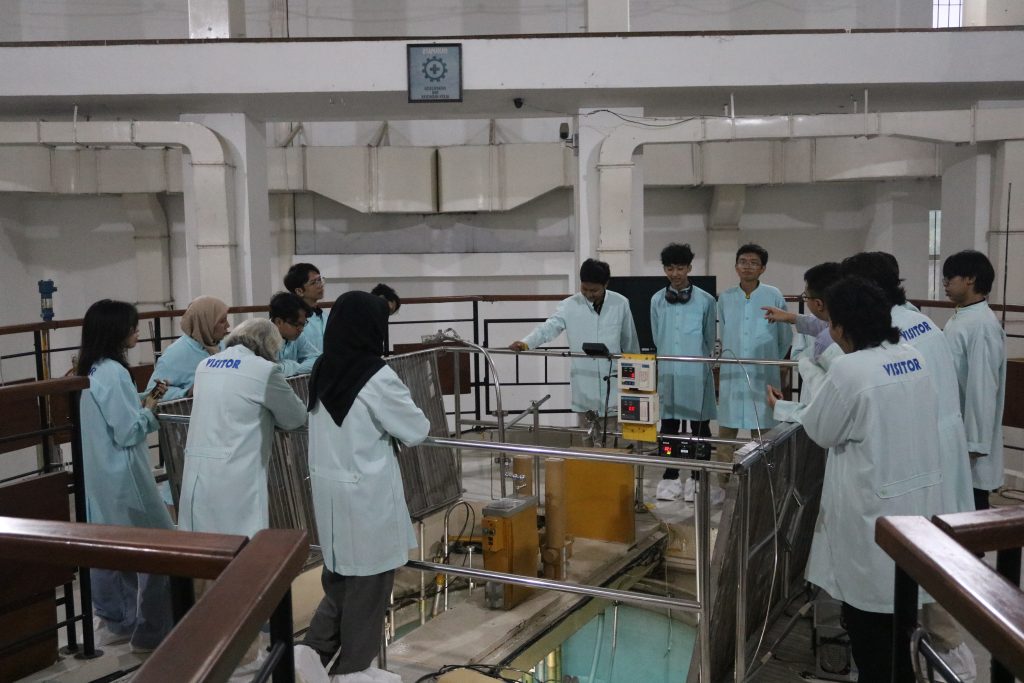
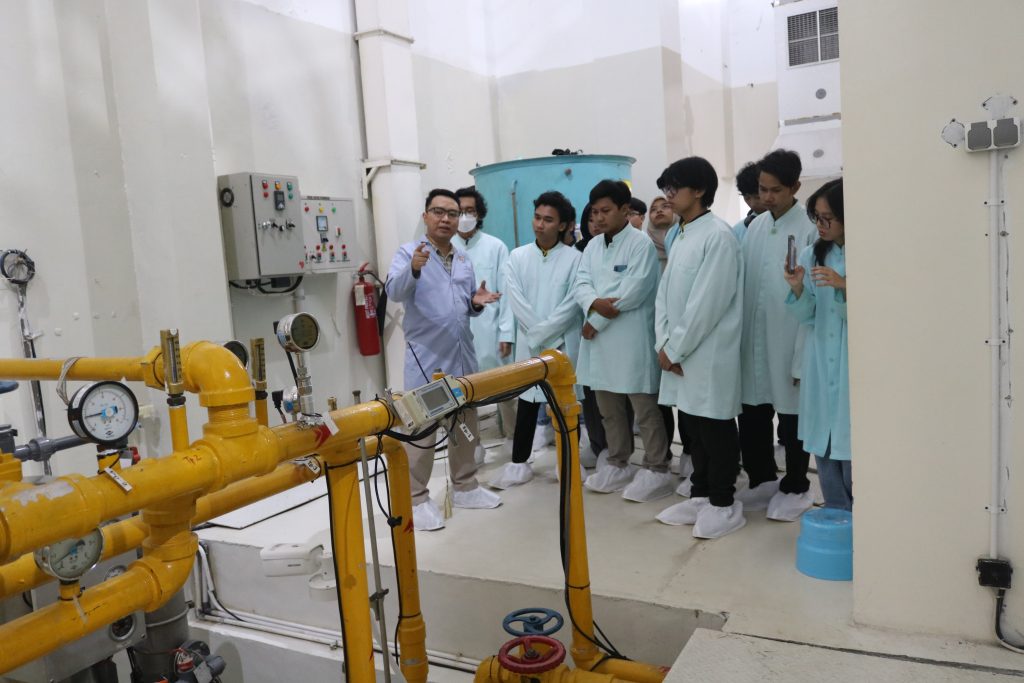


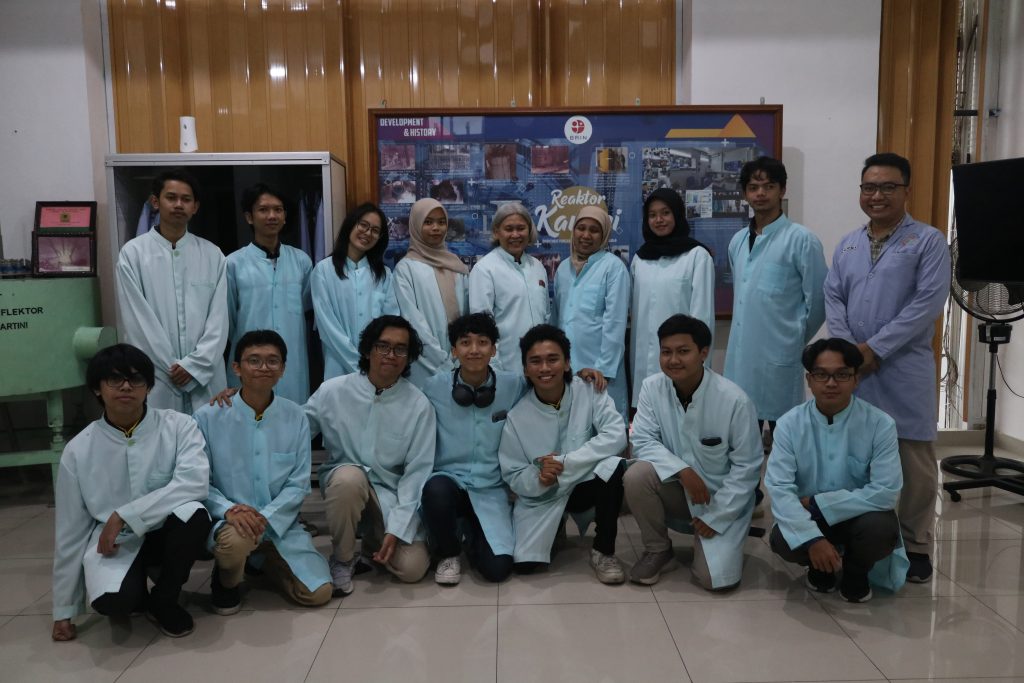
Students and lecturers were invited to tour the Kartini reactor and listen to explanations of the processes that occur in the reactor.
BRIN Yogyakarta hopes that visits like this can continue to be conducted to strengthen collaboration between educational institutions and research agencies, as well as to encourage the younger generation to take a greater interest in and deepen their knowledge of science, particularly in the field of nuclear technology.
The visit concluded with a group photo in front of the Kartini Reactor. This activity provided students with a deep learning experience outside the classroom, as well as practical knowledge about nuclear technology. This aligns with the goal of ensuring inclusive and quality education and promoting lifelong learning opportunities for all (SDG 4: Quality Education). The discussions and understanding of nuclear technology, including the use of nuclear fuel and cooling systems, are related to the goal of ensuring access to affordable, reliable, sustainable, and modern energy for all (SDG 7: Affordable and Clean Energy). This activity also promotes innovation in the field of nuclear technology and strengthens the relationship between educational institutions and research agencies. It supports the goal of building resilient infrastructure, promoting inclusive and sustainable industrialization, and fostering innovation (SDG 9: Industry, Innovation, and Infrastructure). Furthermore, the collaboration between UGM and BRIN Yogyakarta to provide education and practical experience to students supports the goal of revitalizing the global partnership for sustainable development (SDG 17: Partnerships for the Goals).
Author : Ahmad Fathan
Photo : Ahmad Fathan

